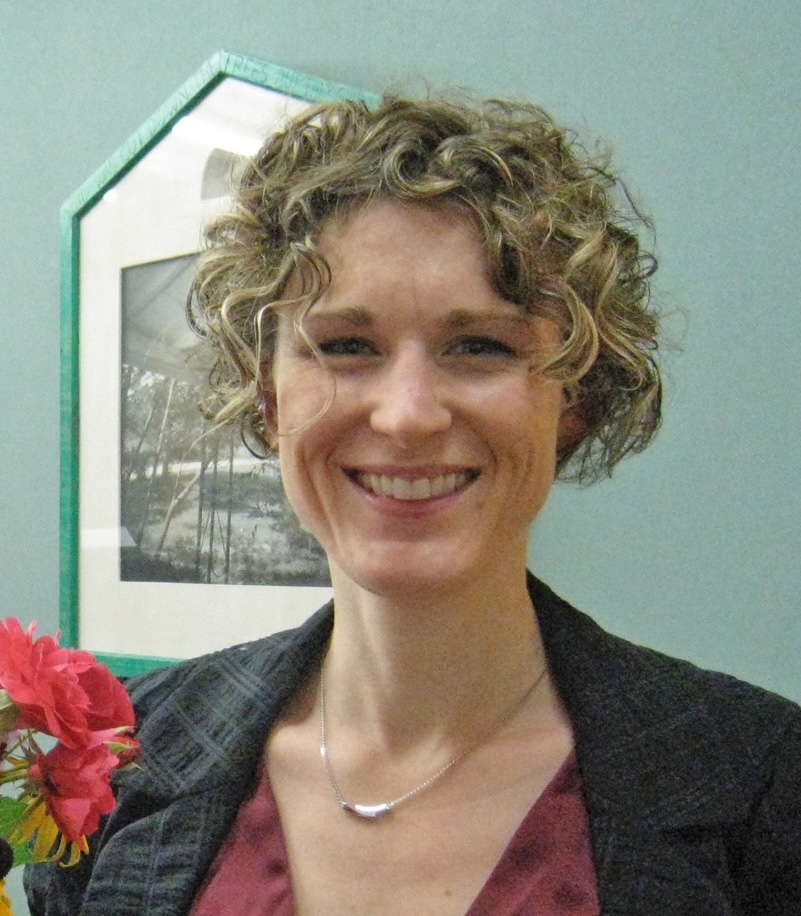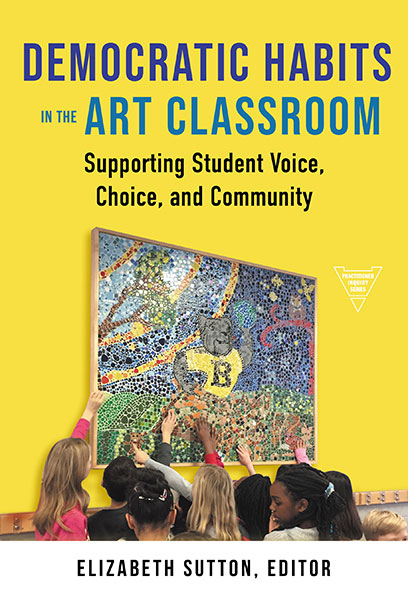 By: Elizabeth Sutton
By: Elizabeth Sutton
Elizabeth Sutton is professor of art history and head of the Department of Art at the University of Northern Iowa. She is the editor of Democratic Habits in the Art Classroom: Supporting Student Voice, Choice, and Community.
Today, teachers are routinely accused by the right of indoctrinating students, promoting a “woke” agenda, and generally causing discomfort, and therefore, harm, through the content they teach. The fallacy here is that discomfort is somehow harmful.
While some parents worry, others forcibly attempt to legislate against any information or experience that may cause their child discomfort. From questions about age-appropriate novels dealing with the harsh realities of Jim Crow, to “divisive concepts” laws legislating against any concept that might suggest blame or the structural causes behind racism and sexism, there seems to be real fear when it comes to asking students to go outside of their experience or comfort zone. In Iowa, where I teach, the state legislature is one of many questioning and potentially defunding Diversity, Equity, and Inclusion (DEI) initiatives. However, as psychologist Lisa Damour relates, the research is unequivocal: uncomfortable experiences build compassion and the ability to take another’s perspective (Damour, 2023, pp. 16-17). That expansion of knowledge is achieved only when young people are emotionally engaged—which is why novels, movies, and art are sometimes better “teachers” than dry facts. Feeling discomfort or emotional pain promotes maturity and psychological growth—much like learning from our mistakes, or learning “the hard way.” That experience, in turn, allows us to reason, consider more perspectives, and to do so with more complexity and depth.
I’ve been reading a lot of books lately that share this theme of discomfort. I Didn’t Sign Up For This (Tracy Dalgleish), Life is in the Transitions (Bruce Feiler), Soulcraft (Bill Plotkin), The Emotional Lives of Teenagers (Lisa Damour), and Inciting Joy (Ross Gay): these books are all about relationships and connection in our volatile and conflicted times. They complement pragmatic texts for educators, such as Education for Liberal Democracy by Walter Parker and Maxine Greene’s classic The Dialectic of Freedom. Synthesizing the theme of discomfort is a lens through which we can consider how to cultivate mature humans able to relate to and reason with one another.
When we feel uncomfortable, we know something has to change. Best case scenario, that change begins in us. But it’s never just us—we are social beings, and we co-create meaning. We learn from one another. As Feiler analyzes from 225 interviews with people from all walks of life, everyone who marked major transitions in their lives had someone nudge, slap, or model for them—in other words, they connected with someone to make that change. Further, 31% of those interviewed saw “struggle” as the major meaningful theme of their lives; 28% indicated that theme was self-actualization and betterment, 18% chose “service” and another 13% selected “gratitude,” while 10% said “love” was their major life theme (Feiler, 2020, p. 304). No matter which theme you may be claiming for your own life as you read these words, we probably use all these themes to integrate parts of our lives and make meaning at different times.
When it comes to discomfort, there are many ways to engage with the feeling and make it meaningful. Of course, there are gurus, teachers, and therapists, all of whom have techniques to help get us there; there is meditation, guided group discussion, and vision quests in the woods; in some cases, maybe even a friend or loved one literally or figuratively slaps us upside the head and tells us to change. Discomfort is a first step to the necessary broadening of our internal knowing, our ability to empathize, our emotional maturity, and our ability to make decisions. Channeling psychologist Lawrence Kohlberg, Parker summarizes this broader sense of knowing as postconventional reasoning[1]—the ability to imagine outside of the status quo or, to use the old cliche, to “think outside the box” (Parker, 2023, p. 107). Carol Gilligan, the feminist psychologist, furthered how we think about reasoning, positing that relationship is also significant to how we (especially women) come to make decisions. Imagining outside the status quo is Greene’s (and countless other art educators’) goal, and requires discomfort and relationship.
How we move through and process discomfort with others is how we make meaning. Disciplines like art, literature, and theatre allow humans to explore emotional processes that in turn allow us to reason better.
Discomfort is a necessary part of development for students, intellectually, psychologically, and socially. It is foundational to learning. Most of us in the global north cannot escape our ubiquitous screens, and our screen time is often alone time. Under late capitalism, the message is often if only we buy more, work more, do more yoga, we’d be happy! I think our grandparents knew happiness wasn’t purchased (and they probably didn’t do yoga). Suffering isn’t fun, but Feiler, Gay, Plotkin, Damour, and Dagleish all share evidence and anecdotes showing that humans do best and are happiest when they share their discomfort. It is in sharing effort, sharing pain, and aiding each other that humans find purpose in their actions. Feeling useful and can give meaning to people’s lives. Lasting satisfaction with life is not found in external validation from status, wealth, or things.
So, what does discomfort mean for teaching and democracy? Feeling discomfort is not too much to ask of most students, or of people generally. We have to let students fail. Parents have to let kids suffer natural consequences. We have to have uncomfortable conversations with our spouses and friends. Doing these things takes skill. We have to practice in our personal relationships and in schools. We can share our discomfort and be with each other compassionately. These skills are built from childhood and should be supported in school and in society. Let us each take responsibility for ourselves so that we can be stewards of each other too.
Toni Morrison wrote, “Freedom is choosing your responsibility. It’s not having no responsibilities; it’s choosing the ones you want.” We must model this. Being uncomfortable isn’t unsafe. Indeed, it’s important that we each have safe people around us to guide, assist, and support us in the uncomfortable feelings and learning we may be doing. That is what parents and teachers do. We aren’t there to do things for the kid, we are there to support their feelings, maintain boundaries, answer their questions, and be there when they pick themselves up. It’s how kids learn self-efficacy, and ultimately, how we all maintain freedom through conscious, compassionate questioning and choice-making—the skills necessary for democracy.
Cultivating democratic habits in the classroom—including the art classroom—is about more than just providing culturally sustaining content. It is about supporting students and parents and sharing power. As teachers, it may be uncomfortable to cede some power to students and their families, and honor the knowledge that they bring to school with them. It may be uncomfortable to have open discussion about issues and values. But in becoming the facilitators of learning together, we establish roots for lifelong learning. These topics are dealt with more deeply in the books in the resource list. I encourage us all to put on some comfy clothes, break out the tissues, and get uncomfortable.
[1] Preconventional reasoners are oriented rigidly to obedience and punishment avoidance (they are mostly children); conventional reasoners are also oriented rigidly, but to systems of law and order fundamental to social order; postconventional reasoners can question what laws or rules may actually be worth following.
References
Dalgleish, T. (2023) I didn’t sign up for this. PESI.
Damour, L. (2023). The Emotional lives of teenagers. Ballantine.
Feiler, B. (2020). Life is in the transitions. Penguin.
Gay, R. (2022). Inciting joy. Algonquian.
Greene, M. (2018). The Dialectic of freedom. Teachers College Press.
Parker, W. (2023). Education for liberal democracy. Teachers College Press.
Plotkin, B. (2003). Soulcraft. New World.
Taylor-Guthrie, D. (1994). Conversations with Toni Morrison. University Press of Missississippi.
Additional resources
Fritzgerald, A. (2020). Antiracism and universal design for learning. CAST Professional.
Hammond, Z. (2014). Culturally responsive teaching and the brain. Corwin.
Muhammed, G. (2023). Unearthing joy. Scholastic Professional.
Safir, S. and Dugan, J. (2021). Street data. Corwin.
Sutton, E., ed. (2023). Democratic habits in the art classroom. Teachers College Press.

Democratic Habits in the Art Classroom
Supporting Student Voice, Choice, and Community
Edited by: Elizabeth Sutton
Photo by Kübra Kuzu

Comments
Great work, Elisabeth!